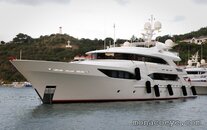If you're in warm tropical 27deg C waters, no current, good viz, on an external easy tour of a wreck (like in Truk Lagoon), you can cognitively accommodate to deep air. You have trained muscle memory to handle most contingencies albeit you may be slower to process, problem solve and react . . .so you strategically mitigate your activities to avoid potential tactical overload in an emergency situation --i.g. don't penetrate the wreck; don't physically exert yourself to CO2 retention levels & starting the vicious dark narc cycle; don't do any extensive computations on-the-fly to your deco schedule; go no deeper than 60m or ppO2 1.4 etc. --keep it all nice, easy and simple. . .
For my two-week Sri Lanka April trip on the aircraft carrier
HMS Hermes, I've allocated about $1500 for helium & O2 --initially planning 24 total dives utilizing 21/35 trimix with eanx50 and O2 deco for a depth range of 51 to 54m. However if conditions are optimally benign like the tropical setting described above for an external survey dive the first few days, I'll conserve helium by using a lighter 21/20 mix --or even just diving deep air-- and utilize the higher 21/35 (or 18/45 trimix) later on in additional stage bottles for extended penetrations inside the aircraft carrier.








